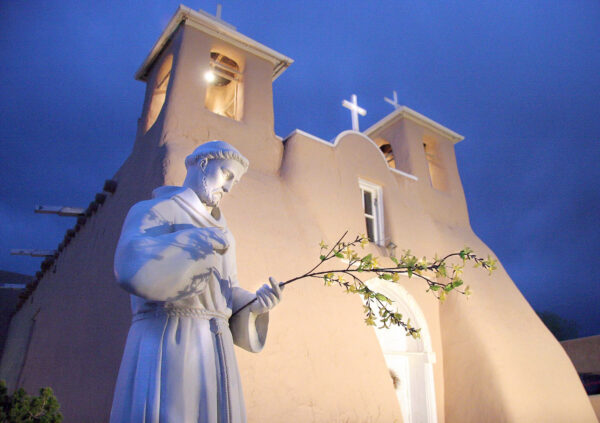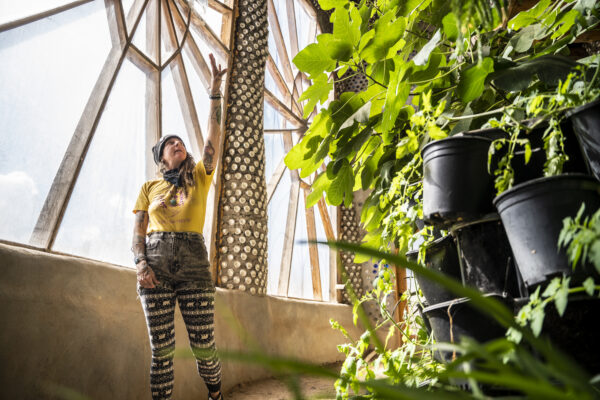From adobes to Earthships, Taos Architecture is full of surprises
By Craig Smith

Taos County is home to some of the most distinctive architectural styles in the coun-try: adobe, Earthship, Pueblo, mission, Spanish revival, territorial, folk Victorian — these styles and more await your visit.
No trip to Taos is complete without a visit to where the town began — Taos Pueblo. A thousand years of history greet you at this multi-story example of traditional Pueblo con-struction, dwellings made of adobe (straw mixed with mud) reinforced by interior timber. This style inspired subsequent architecture, such as the Spanish Pueblo revival style popularized in the 1930s and 40s. Prominent examples include structures on Taos Plaza; the Mabel Dodge Luhan House on Morada Lane; San Francisco de Asís Church in Ranchos de Taos; the Harwood Museum on Ledoux Street; and the University of New Mexico complex on Civic Plaza Drive. Hotel La Fonda on Taos Plaza exhibits many of the characteristics of the Spanish Pueblo revival style, including flat roofs, parapet walls, rounded corners, stucco in earth tones, and thick round beams (“vigas”) that extend beyond the walls and roof lines.

These features are also in evidence at the Luhan House. Between 1917 and 1922 Mabel Dodge Luhan and her husband, Tony Lujan of Taos Pueblo, expanded a four-room adobe into the present 17-room main house using traditional Pueblo materials and methods. Tradition defines San Francisco de Asís Church. Construction on this renowned symbol of the Southwest site may date back to the late 1700s.
Recognizable for its prominent double-towers, the church fea-tures hand-hewn vigas and hand-carved corbels (structural elements typically placed for support atop columns). As is common with traditional adobe construc-tion, each year the façade is renewed with fresh coats of mud plaster. In 1926, Russian artist Nicolai Fechin (fay-shin) arrived in town. He spent the next six years transforming a small adobe into a 4,000-square-foot structure that today houses the Taos Art Museum on Paseo del Pueblo Norte.

The building combines such Pueblo revival details as vigas and corbels with arched windows common to mission-style archi-tecture. Close by, at 122 Paseo del Pueblo Norte and Bent Street, is a residential ex-ample of the Mission Revival style, with its characteristic white stucco exterior and cast stone columns. Another prominent Taos architectural style is Territorial: Look for structures that feature square columns, dentils (small, rectangular decorative blocks often re-peated around rooflines), and trim around doors and windows.
A must-see on any Taos architectural tour is Hacienda de los Martinez on Hacienda Road. Dating back to 1804, this complex around two courtyards, a feature common to Hispanic vernacular structures, is one of the few remaining Spanish Colonial “great houses” in the Southwest, meaning a large house or mansion (Hacienda Martinez has 21 rooms) with staff.

Perhaps our most unique architectural style is the Earthship. These are self-sufficient dwellings constructed with natural and recycled materials that emphasize energy and water conservation. On the mesa northwest ofTaos lies the Greater World Earthship Community, where you can see and rent examples of this style. You can also visit the Earthship Visitor Center in Tres Piedras.
“Architecture is a visual art, and the buildings speak for themselves,” said architectJulia Morgan. Here in Taos, they speak volumes.

